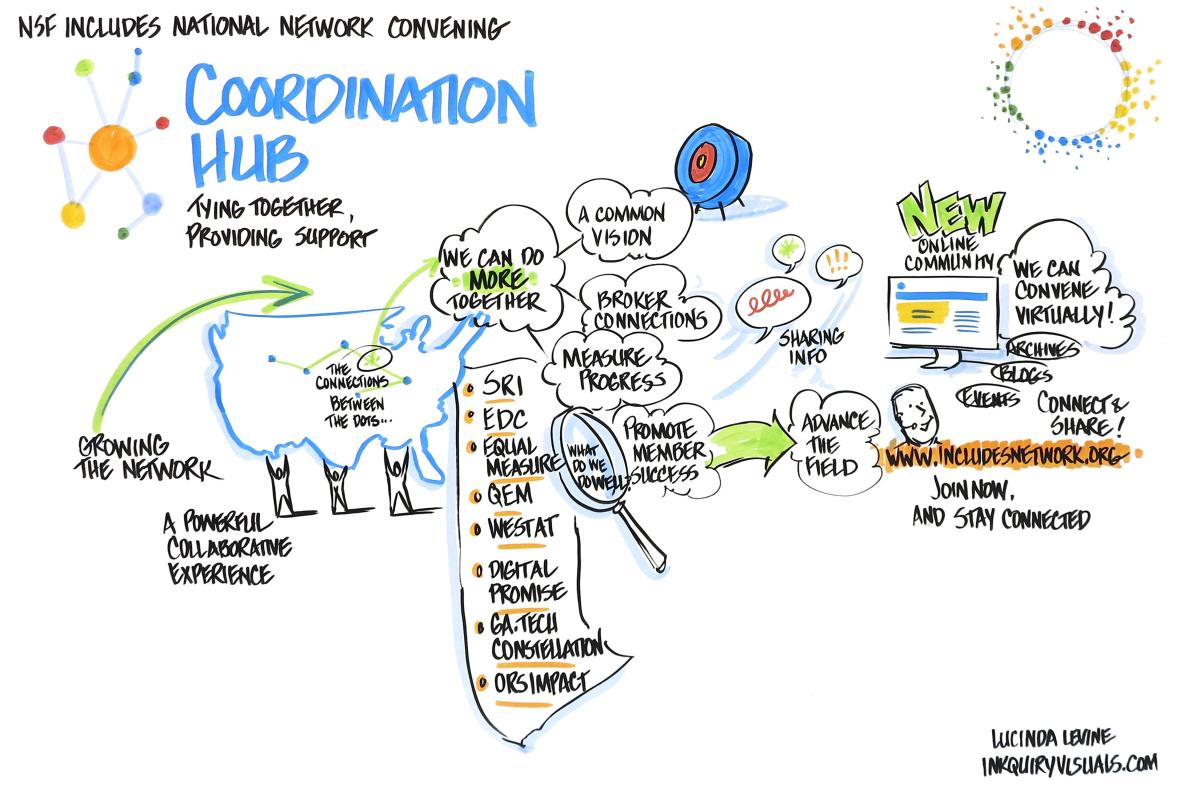Let’s Connect to Build the INCLUDES Network!
The NSF INCLUDES Network as a nexus
I often envision the NSF INCLUDES Network as a nexus through which leaders from STEM education, industry, community organizations, and the government can connect to broaden participation in the STEM workforce.
Some Network members shared their feedback recently:
“So grateful for this wonderful network…for dialogue and sharing.”
“...the member directory on the INCLUDES Network [helps people] inquire about similar projects and research Network members who are engaged in similar work across the country.”
A recent example of how the INCLUDES Network functions as a nexus is a collaborative event that took place between the CAISE Broadening Participation in STEM Task Force and INCLUDES Network members. An engaging conversation explored questions on the cultural norms of STEM, using one of the practice briefs from the task force’s toolkit, Broadening Perspectives on Broadening Participation in STEM. Create an account and log in to view a summary of the webchat.
So, who is a part of the INCLUDES Network?
Members of the INCLUDES Network hail from universities, nonprofit organizations and federal agencies. They are scientists, engineers, educators, evaluators, researchers, thought leaders from formal and informal STEM, those working in the K–12 sphere and those in higher education, to name a few. Some examples of the kinds of projects and programs that INCLUDES members are working on include:
- First2 Network is building upon their learning from a pilot project. They will develop a statewide network and study, implement and improve practices for college enrollment rate and success of undergraduate STEM students, with emphasis on rural first generation students through their first two years of college.
- STEM Opportunities in Prison Settings (STEM-OPS) aims to provide and support viable pathways to STEM for incarcerated and formerly incarcerated people, using a collective impact approach.
- Early Engagement in Research (key to STEM retention) is working to extend and adapt their research-immersive summer internship model through an alliance with multiple partners, such as peer research institutions, school districts and informal educational institutions.
- MATH FACESS (Families & Communities Empowering Student Success in Mathematics) uses a collective impact approach to close the math achievement gap by connecting formal and informal STEM educators around a coherent, multi-faceted program of early mathematics teaching and learning that empowers parents and teachers to support children's mathematical development.
The NSF INCLUDES Coordination Hub facilitates connections and provides opportunities to catalyze action toward equity in STEM. We serve as a one-stop shop for members in the INCLUDES Network, and we welcome you to join us!

The Coordination Hub works with the NSF INCLUDES National Network in many ways.
How can you engage with the INCLUDES Network?
- Join the INCLUDES Network online community to access resources, connect with Network members, and post or find relevant opportunities: www.includesnetwork.org
- Participate in discussions. A recent discussion series focused on Broadening Participation in STEM (#BPconversations), exploring questions such as “What do we mean by intersectionality?” and “what does it mean to approach evaluation with a diversity lens?”
- Join affinity groups to come together around similar goals, foci, interests, needs, or approaches. Examples include Exploring STEM Pathways, K–12 Career, Evaluation, and Models of Collaboration and Partnership.
- Attend virtual events such as webinars and webchats, like Strengthening Capacity to Implement Culturally Responsive Practices or INCLUDing and Increasing Accessibility for All. Can’t attend one? Read the summaries and access the resources posted in the online library.
- Connect with members. Our member directory is a great way to find others in the Network and connect with one another.
- Read blogs to learn more about what other INCLUDES members are doing, including our current “From Me to We” blog series.
- Connect in person at professional conferences. Check out our upcoming events to join INCLUDES informal meet-ups.
- Follow us on Twitter to share your thoughts and stay up to date: @NSFINCLUDESHub.
The Coordination Hub is building a collaborative infrastructure for the INCLUDES Network. It provides resources and a collaborative platform for members of the InformalScience.org community, as well as for anyone else committed to improving equity and access to STEM learning and careers. Come join the national movement!